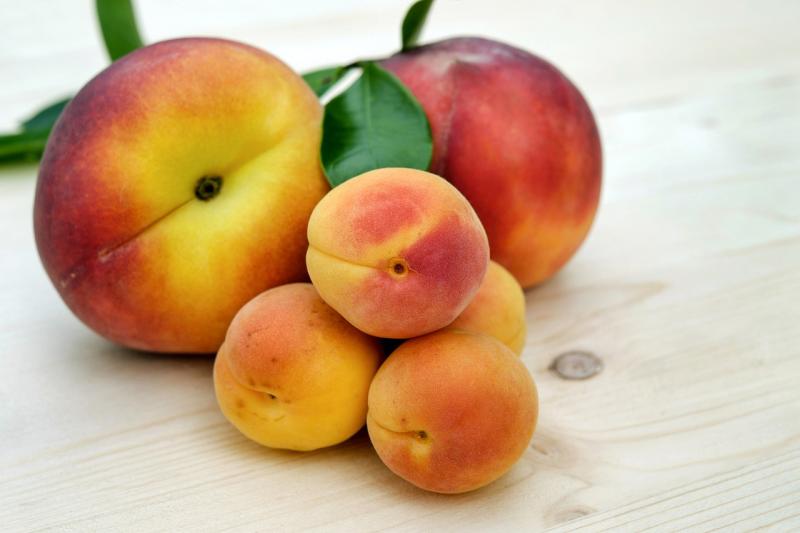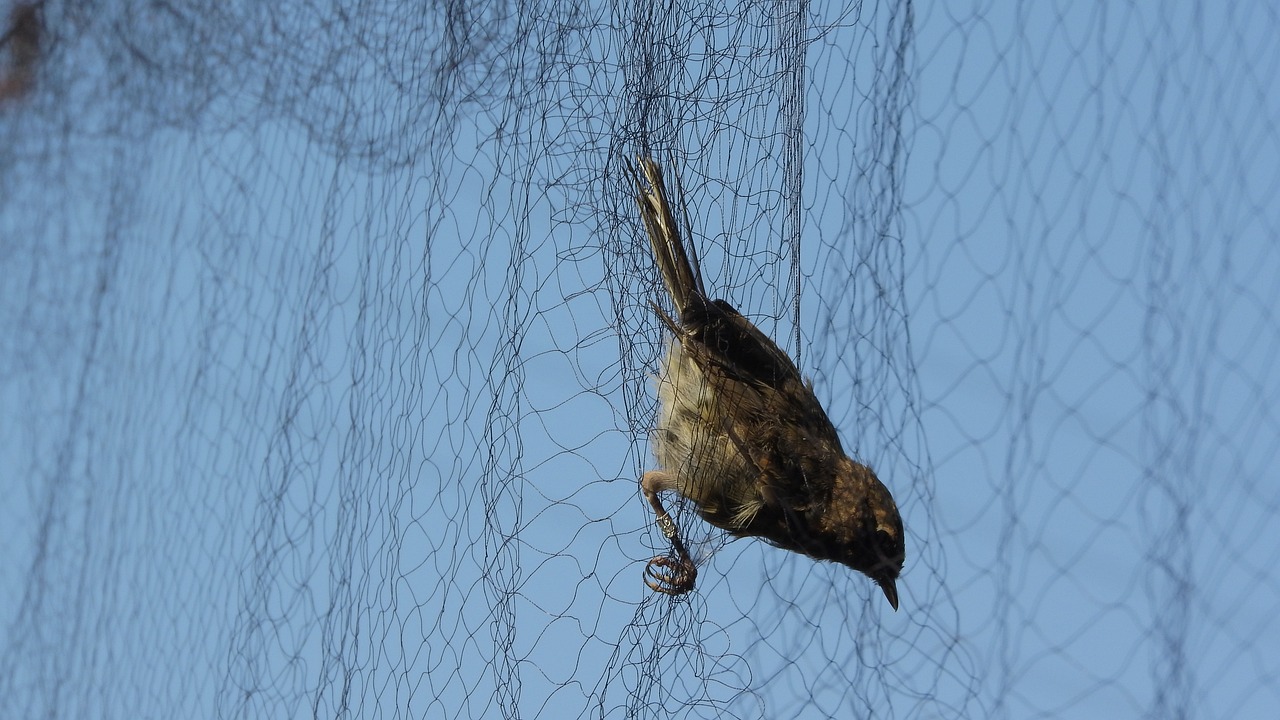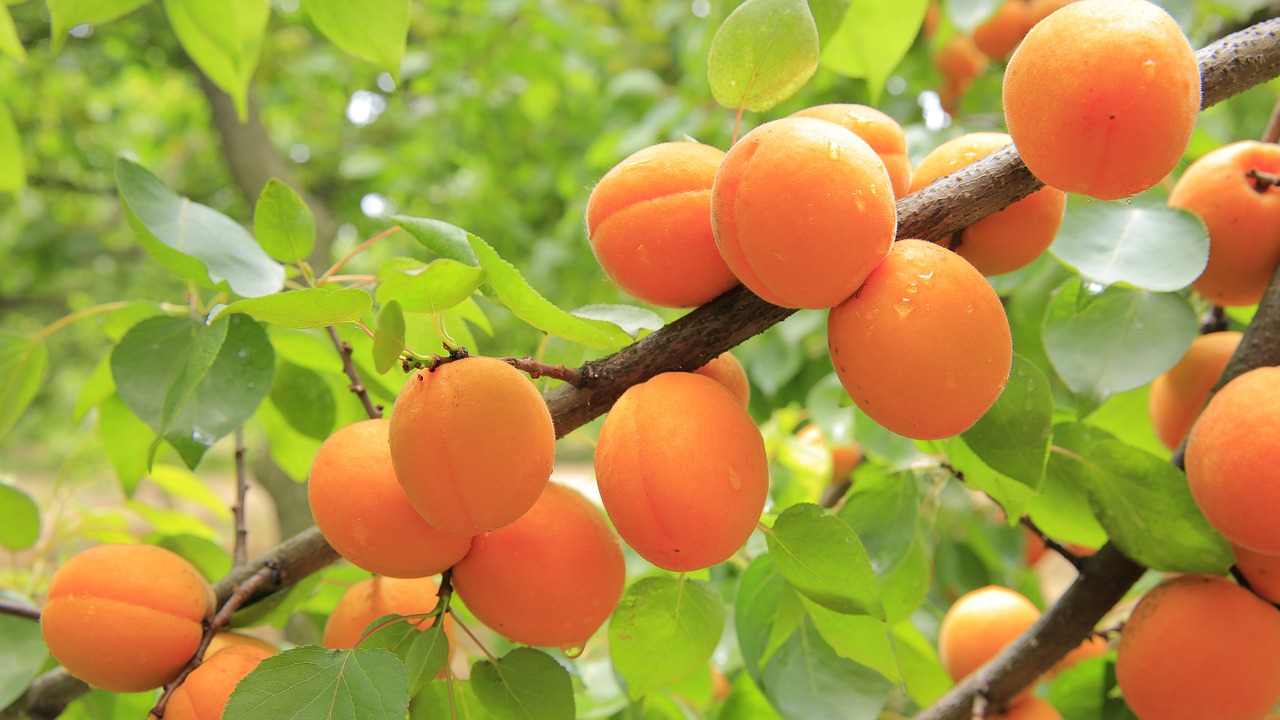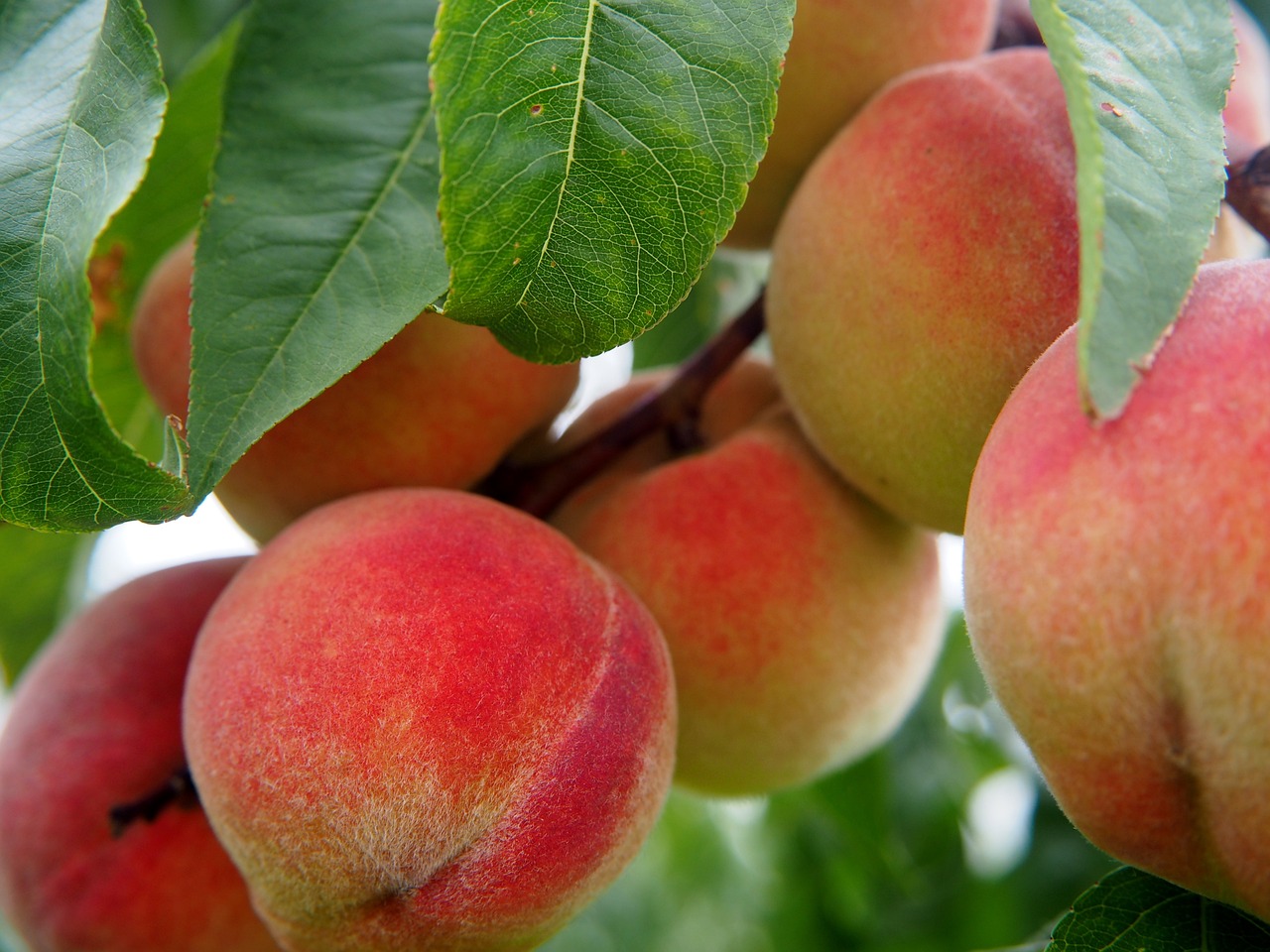
Peaches and apricots are a favorite summer fruit, and a great source of dietary fiber, Niacin, Potassium and Vitamin C. Growing peaches and apricots in Nebraska is a challenge, but still many gardeners are successful and looking forward to harvest in the next few weeks.
 Preventing Bird Damage
Preventing Bird Damage
As harvest nears, protect fruits from bird damage, which can be serious on peaches and apricots. Many species of birds are attracted to ripening fruits, including starlings, robins, grackles, Baltimore orioles, and blue jays. Protect trees with bird netting, using a multi-strand net large enough to cover most of the tree. Netting can be installed in the tree's canopy in spring, and left in place till fall. Store the netting in a dry place for winter, and it will last for several years. White or light-colored nets are best because birds are less likely to become caught in nets they can easily see.
Or create a teepee around your tree with monofilament lines. Securely attach a dowel to the top of the tree, perpendicular to the ground, and extending about 2 feet above the tree. Next, attach 15 to 20 long monofilament (fishing) lines to the dowel, and on the opposite end of each line to a wooden stake or landscape pin. The lines should be long enough to reach the ground about 15 feet away from the tree's trunk. Stake the lines to the ground so that most of the tree is within the teepee.
Knowing When to Harvest
Harvest dates for peaches and apricots vary by cultivar, but they are typically harvested from late June through August. Taste a few fruits as they near maturity to determine when they have reached peak flavor.
Peaches and apricots ripen in color, texture and juiciness after harvest, but flavor and sugar content does not increase once they are removed from the tree. So make sure your fruits have developed ideal sweetness, but are still a little firm, before harvesting. Allowing fruits to become overripe on the tree will decrease their storage time, and increase the potential for disease, insect and bird damage.
 Typically, apricots are harvested when the fruits have developed full color, from yellow to deep orange depending on the cultivar, with no green remaining in the skin, and they are just beginning to soften. Mature apricots vary in size from 1 1/2 to 2 1/2 inches in diameter. Apricots have a very short storage life, typically 1-2 weeks at 30-40 degrees F degrees and 90% humidity, so make plans for their use before they spoil.
Typically, apricots are harvested when the fruits have developed full color, from yellow to deep orange depending on the cultivar, with no green remaining in the skin, and they are just beginning to soften. Mature apricots vary in size from 1 1/2 to 2 1/2 inches in diameter. Apricots have a very short storage life, typically 1-2 weeks at 30-40 degrees F degrees and 90% humidity, so make plans for their use before they spoil.
 Harvest peaches when the base color, or ground color, of the fruits changes from green to full yellow. Many newer peach cultivars have a lot of red coloration to the skin, but don't base your harvest on this. Red coloration is not a reliable measure of maturity; in fact, some cultivars have so much red coloration that the ground color change can be hard to detect. In this case, firmness, fruit size, and taste testing are the best indicators of ripeness. Avoid harvesting any fruits with greenish skins, due to their poor flavor and texture. Peaches can be stored for 2-4 weeks when held at 31-32 degrees F and 90% humidity.
Harvest peaches when the base color, or ground color, of the fruits changes from green to full yellow. Many newer peach cultivars have a lot of red coloration to the skin, but don't base your harvest on this. Red coloration is not a reliable measure of maturity; in fact, some cultivars have so much red coloration that the ground color change can be hard to detect. In this case, firmness, fruit size, and taste testing are the best indicators of ripeness. Avoid harvesting any fruits with greenish skins, due to their poor flavor and texture. Peaches can be stored for 2-4 weeks when held at 31-32 degrees F and 90% humidity.
All Images from Pixabay.com